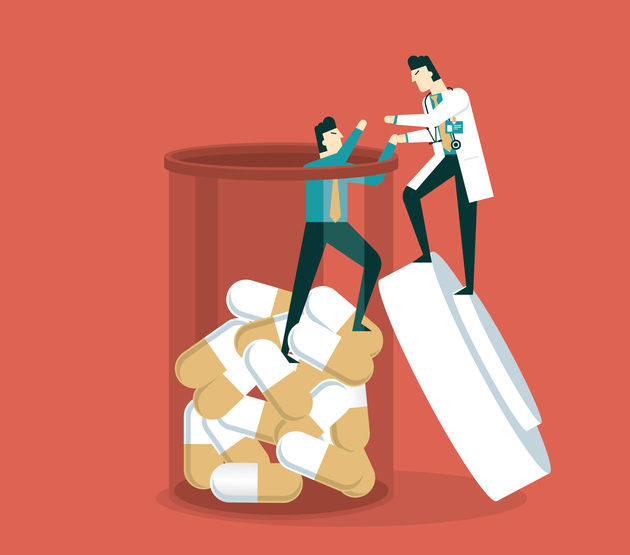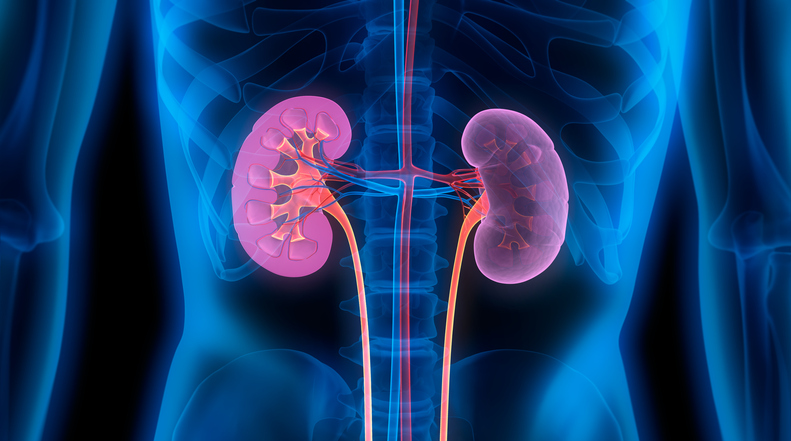
Addiction care providers are developing digital tools to help decentralize their programs from medical treatment centers. These efforts are designed to mitigate the multitude of access barriers preventing patients recovering from opioid use disorder from sticking with their treatment plans.
Most programs require patients to make frequent trips to a medical center — a significant obstacle to a patient population that is more likely to not have reliable housing or transportation. To provide an alternative access point and in response to the alarming uptick in overdose deaths, UVA Health, based in Charlottesville, Va., recently built and deployed an app to help patients recovering from opioid use disorder stick to their treatment.
Many addiction care professionals say the need for digital recovery tools is more urgent than ever, as the latest CDC data shows a 15 percent increase in overdose fatalities last year to 107,622. That represents the highest number of overdose deaths recorded in the country during a single 12-month period.
Social workers preselected patients whose circumstances made them most likely to disengage from their treatment program for the pilot, and the patients were actively involved in informing the app’s design.
The app, called HOPE (Heal Overcome Persist Endure), was modeled after PositiveLinks, an app the health system developed to support patients living with HIV. HOPE shares key features with PositiveLinks, such as a portal to quickly reach physicians and clinical support staff, a tool to remind users to take their medication and log whether they did, and a peer message board for community support and shared education.
Acting on feedback from patients recovering from opioid use disorder, the team developing HOPE added several characteristics to the app. Among these are a tool to track mood and stress levels, a feature allowing users to log moments they feel encouraged about their recovery, and a way to track triggers that increase a user’s desire to use opioids.

Health Benefit Consultants, Share Your Expert Insights in Our Survey
Share some of the trends you are seeing among your clients across healthcare, including chronic conditions, behavioral health, healthcare navigation, and more.
Dr. Jacqueline Hodges, an infectious disease physician at UVA Health and member of the team developing the HOPE app, said incorporating user feedback into the design process was an essential way to ensure the app was mitigating the stigma and access barriers faced by people recovering from opioid use disorder.
“We obviously have our own preconceptions about what someone in recovery might ideally want or need. It’s not our lived experience, and it’s not something that we can really understand at a personal level,” Hodges said. “At the end of the day, this app is only going to be successful if people feel that it actually benefits them and it meets their needs.”
Six months into the HOPE app’s pilot program, 56 percent of the cohort were still receiving care. Hodges said that this retention rate was “very high in a relative sense,” as the myriad of access barriers and high risk of disengagement among opioid use disorder patients makes it difficult for addiction care professionals to obtain solid benchmarks for retention in treatment programs.
Hodges said the app speaks to a broader trend in addiction treatment: decentralizing care.
She pointed out that addiction care’s “meeting people where they’re at” initiative is taking off in urban areas where advocacy for those struggling with addiction is prevalent. However, rural communities do not see the same type of treatment programs mobilizing to the streets, even though the opioid crisis has caused a massive surge in overdose deaths in both areas in recent years. Addiction care professionals “definitely still have some room to learn” when it comes to how technology can better reach rural patients with opioid use disorder, she said.
As overdose deaths continue to increase in both urban and rural communities, hospitals across the nation are piloting various ways to keep patients engaged through technology. Marian Currens, a nurse practitioner and director of the Center for Addiction Medicine at the University of Maryland Medical Center Midtown Campus, agrees that apps and other digital health offerings can help opioid use disorder patients better adhere to their treatment plans, noting that they serve as a “tool in the toolbox,” rather than a complete replacement for traditional care.
After attending a nurse conference for addiction care in 2018, Currens began working to integrate two apps developed by Pear Therapeutics into her center’s treatment plans. The apps, called reSET and reSET-O, allow users to complete modules to better understand their cravings and triggers, as well as modules on how to develop coping skills to avoid using substances. The apps also encourage engagement by giving users the opportunity to earn rewards, such as coupons for Starbucks or Amazon.
The apps have been used by patients receiving treatment at the center for more than a year, and Currens said many of her patients who choose to use the app have found it to be an easily accessible way to stay connected to their recovery. Keeping patients engaged is a crucial piece needed for retention in addiction treatment programs, she declared.
Both Currens and Hodges said the stigmatization of substance use has held back addiction care from developing digital initiatives at the rate of other chronic diseases, such as diabetes and heart disease. This stigma increases restrictions on how addiction specialists deliver care, but the constant barriers opioid use disorder patients face when seeking care make them one of the patient populations who could benefit most from digital innovation.
In an earlier interview with MedCity News, Zack Gray, CEO of digital health startup Ophelia, agreed with this sentiment. His company aims to help “the invisible 80%” of opioid users in the U.S. who are unengaged with the healthcare system by connecting them to prescribers to obtain medication to manage their addiction.
Ophelia offers medication-assisted therapy for opioid use disorder, which is considered the most effective treatment by the CDC and other agencies. Gray is calling for broad reimbursement of the telemedicine service for medication-assisted therapy after the pandemic emergency is officially declared over, arguing the service saves lives.
It goes without saying that digital health offerings such as medication-assisted therapy provided via telemedicine and opioid use disorder treatment apps aren’t silver bullets that can solve to the opioid crisis. However, they are a step in the right direction, as they create more flexibility and accessibility for a patient population that faces significant obstacles to engagement and retention within treatment programs.
“There’s no way that we’re going to be able to treat addiction with a brick and mortar location forever,” Currens said. “We have to meet patients where they are, and digital technology is just one tool to be able to help that happen.”
Photo: sorbetto, Getty Images














